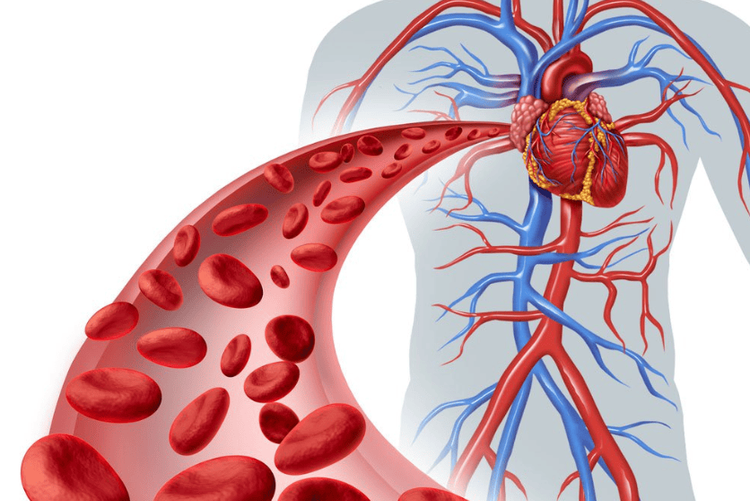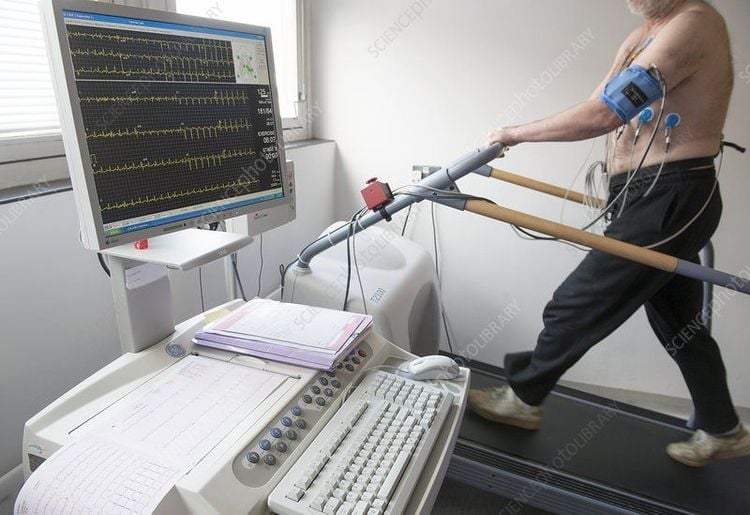This is an automatically translated article.
This article was professionally consulted by a Doctor of Radiology, Department of Radiology - Vinmec Central Park International General Hospital.Stress echocardiography is a diagnostic method in cases of inability to exercise or abnormal resting electrocardiogram, which helps to evaluate EF as well as new regional movement disorders in pre-existing patients. history of myocardial infarction. Stress echocardiography can be combined with echocardiography to assess myocardial perfusion status and tissue Doppler ultrasound.
1. What is stress echocardiography?
Stress echocardiography, also known as stress echocardiography, is a non-bleeding probe, this method is used to investigate ventricular wall movement during periods of rest and when stressing the myocardium, for the purpose. is to evaluate coronary artery perfusion function or left ventricular contraction.
There are 3 ways to conduct stress echocardiography as follows:
Ultrasound with physical exertion: If using this method, there will be no need to use drugs, so there are no side effects, so it is quite safe. However, when using this method, evaluation is more difficult because continuous echocardiographic monitoring is often not possible, because it can only be performed in the early stages of exercise and during the recovery period. Medicinal stress ultrasound: Usually, drugs commonly prescribed in drug stress ultrasound are Dobutamin, Dipyridamole, Adenosine... This is the most commonly used method because it's convenient for ultrasound and doctors. can be proactive in the testing process. Transesophageal atrial stimulation, or pacing: This method is currently rarely used in clinical practice.

Siêu âm tim gắng sức tại bệnh viện Đa khoa quốc tế Vinmec
2. Indications and contraindications in stress echocardiography
Indications for stress echocardiography in cases:
Includes general indications for stress echocardiography such as exercise stress echocardiography, Dobutamine echocardiography. But dobutamine ultrasound is indicated when the patient is unable to use physical strength. Patients with angina pectoris using stress echocardiography to confirm diagnosis and assess the extent of ischemic heart disease, silent myocardial ischemia, > 7 days after myocardial infarction > 7 days to determine muscle status such as infarct scars, myocardial ischemia, the risk of disease recurrence. Monitoring in patients after coronary artery bypass grafting or coronary artery bypass grafting Monitoring the effectiveness of medical treatment and the ability to adapt and work Use stress echocardiography to assess left ventricular function in cardiomyopathy Assessment of disease severity and myocardial function in valvular heart disease Contraindications to stress echocardiography in cases of:
Myocardial infarction < 7 days Angina in the last 24 hours and unstable type Main trunk stenosis of left coronary artery, acute pericarditis, myocarditis, ventricular tachycardia, atrial and ventricular tachycardia, hypertrophic obstructive cardiomyopathy, multifocal or clustered ventricular extrasystoles, second- and third-degree atrioventricular block, arrhythmias bradycardia < 45/min at rest. New York Heart Association (NYHA) functional heart failure 4 Aortic stenosis with history of fainting Severe resting blood pressure: systolic blood pressure > 200 and diastolic blood pressure > 110 mm The patient wears a pacemaker , have serious physical diseases (such as infections, anemia...) and drug poisoning. The advantage of this method is that it helps to diagnose the disease when the patient is not able to exercise with physical strength and the patient has an abnormal resting electrocardiogram. history of myocardial infarction. In addition, stress echocardiography can be combined with echocardiography to assess myocardial perfusion status and tissue Doppler ultrasound.

Siêu âm tim stress có thể phối hợp với kỹ thuật siêu âm khác để đánh giá tình trạng tưới máu cơ tim
However, the disadvantage of this method is that it completely depends on the experience of the operator as well as the diagnostic value depending on the quality of the digitized images; limited if the patient has extensive dyskinesia on resting echocardiography and the patient has multiple coronary arteries; Vasodilators are contraindicated and are affected by medications the patient is on.
3. Steps to conduct stress echocardiography
Step 1: Prepare an ultrasound machine with a dedicated computer program for stress echocardiography and recording on magnetic optical discs - MOD; 6-lead electrocardiogram recorder and cardiopulmonary resuscitation equipment, oxygen
Step 2: Prepare drugs: Dobutamine, Atropine, isotonic fluid, Nitroglycerine spray, intravenous beta blockers, injectable calcium blockers IV (Diltiazem, verapamil)
Step 3: Ask the patient to discontinue beta-blockers 24 h prior to the procedure if clinically feasible and warranted. For people with diabetes, do not use normal insulin but only slow insulin and reduce the dose by 1/2. Also, do not eat for 2 hours before the stress echocardiogram.
Step 4: Measure the patient's blood pressure, record 12-lead electrocardiogram and determine the dose of Dobutamine and heart rate to achieve.
Step 5: Do ultrasound at rest according to the 4 basic design process. Insert an intravenous line through a catheter and initiate a dobutamine infusion at 10 mg/kg/min if resting ultrasound is normal, 5 mg/kg/min if resting ultrasound is abnormal. In 3 minutes, increase the infusion dose by 1 level.
Step 6: At the beginning of the 3rd minute at each dose level, the sonographer will need to record ultrasound images according to the 4-diagram procedure, blood pressure measurement and 12-lead ECG.
Step 7: Intravenous injection of 0.25 - 0.5 mg Atropine in the absence of contraindications when the heart rate is still > 20 beats/min from the target rate or for the patient to squeeze 2 small balls with 2 hands to increase sympathetic tone, increase heart rate. When target frequency is reached, record Echocardiogram, ECG, blood pressure and stop Dopamine infusion.

Chuẩn bị đầy đủ dụng cụ trước khi tiến hành siêu âm tim stress cho người bệnh
Step 8: In the recovery stage, measure blood pressure, record 12-lead electrocardiogram every 2 minutes. Thereafter, ultrasound imaging should be recorded every 3 minutes until the patient's heart rate is near return to resting level and when the ECG and echocardiographic changes have not returned to resting level.
Step 9: The doctor will evaluate the ultrasound images and conclude about heart wall movement disorders.
During stress echocardiography, when the patient finds angina pectoris clearly, cannot continue due to shortness of breath, fatigue or the feeling of fainting, signs of vasospasm, hypotension, chest pain, change ECG changes or hypotension, atrial fibrillation or supraventricular tachycardia, conduction block, myocardial infarction, etc., the procedure should be discontinued.
In summary, echocardiography is a way to help detect and diagnose some heart diseases quickly and effectively. If you suspect you have heart disease, you can come to Vinmec International General Hospital System. This is one of the leading prestigious hospitals in the country, Vinmec uses the most modern generations of color ultrasound machines today in examining and treating patients. One of them is GE Healthcarecar's Logig E9 ultrasound machine with full options, HD resolution probes for clear images, accurate assessment of lesions. In addition, a team of experienced doctors and nurses will greatly assist in the diagnosis and early detection of abnormal signs of the body in order to provide timely treatment for cardiovascular diseases.
In addition, to protect cardiovascular health in general and detect early signs of myocardial infarction and stroke, customers can subscribe to the Cardiovascular Screening Package - Basic Cardiovascular Examination of General Hospital Vinmec International. The examination package helps to detect cardiovascular problems at the earliest through tests and modern imaging methods. The package is for all ages, genders and is especially essential for people with risk factors for cardiovascular disease.
Please dial HOTLINE for more information or register for an appointment HERE. Download MyVinmec app to make appointments faster and to manage your bookings easily.













